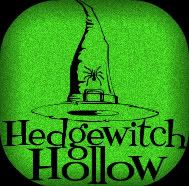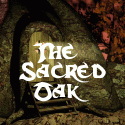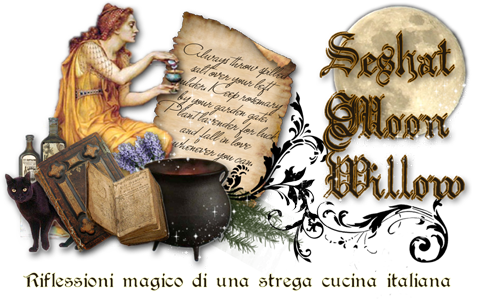St. John's Wort Hypericum perforatum
A common European wild plant, now a weed in many parts of the world; St John's Wort is an herb used profusely at Beltane, when it would be just beginning to flower. It was considered to have the power to heal wounds and down-heartedness. The herb contains hyperforin, a known antidepressant, and hypericin, which has shown distinct antiviral properties. St. John's Wort is considered a safe medicine currently used as a tonic for nervous exhaustion and prolonged anxiety. An infusion applied to a wound or burn can stimulate tissue repair. St. John's wort is a plant with yellow flowers whose medicinal uses were first recorded in ancient Greece. The flowering tops of St. John's wort are used to prepare teas, tablets, and capsules containing concentrated extracts. Liquid extracts and topical preparations are also used. Today, St. John's wort is used by some for depression, anxiety, and/or sleep disorders. The tops of the plant are picked in full flower. It is easy to grow, but make sure you get the right species--perforatum has oil glands in the leaves which show up as transparent dots against the light.
I personally have been using St. John's wort in capsule form for about a year now for my depression that I have suffered from on and off most of my teenage and adult life. I purchase mine from my herbalist/naturopath and find it has been more beneficial to me than the numerous pharmaceutical anti-depressants I have been off and on for many years. However, I want to add strongly here, that I did not pursue this change without the consultation of my doctors as I have battled chronic depression for most of my life. I react adversely to most anti-depressants, but do not suffer from using St. John's wort the way I was with the pharmaceuticals.
In my pursuit to find an alternative treatment for my depression led to my studying herbs and herbal remedies, which I am still working on and someday hope to become a naturopath myself. I do not recommend you change any of your prescribed medicines without first consulting your doctor.
A Magickal Perspective of St. John's wort
St. Johns Wort - a masculine herb, ruled by the Sun and its element is fire.
· St. Johns Wort is used for protection, calming anxiety and the hearing or auditory perception of spirits. Keep the dried leaves with you to rub on your wrists and temples when stress or anxiety begins to take hold. Sleep on a sachet of St. Johns Wort and Sage to bring on prophetic dreams.
· What St. John's Wort Is Used For
· St. John's wort has been used for centuries to treat mental disorders and nerve pain.
· St. John's wort has also been used as a sedative and a treatment for malaria, as well as a balm for wounds, burns, and insect bites. (analgesic, antiviral, anti-inflammatory)
· Today, St. John's wort is used by some for depression, anxiety, and/or sleep disorders.
· Strengthens the nervous system and speeds healing.
· In a tincture for shingles, cold sores and herpes.
· In a cream for sore skin, inflamed rashes and cuts.
· Infused oil as base oil for aromatherapy back massage, and with lavender essential oil for neuralgia. (See recipe for St. John's Wort oil listed below)
How St. John's Wort Is Used
The flowering tops of St. John's wort are used to prepare teas, tablets, and capsules containing concentrated extracts. Liquid extracts and topical preparations are also used.
Skin Conditions
Oil of St. John's wort, applied to the skin, was a folk remedy for skin injuries, nerve pain, burns and hemorrhoids. Although the oil is sold in some herbal stores, creams are also available. Some are standardized to hypericin or hyperforin, which are thought to have anti-inflammatory and antibacterial effects. St. John's wort also contains tannins, naturally occurring compounds thought to relieve skin irritations, such as those resulting from minor cuts.
Ear Pain
Some alternative practitioners recommend St. John's wort for ear pain due to an ear infection (otitis media). A combination herbal ear drop that contained St. John's wort, garlic, calendula and mullein is also as effective as conventional ear drops.
Other Conditions
St. John's wort has also been explored for conditions that can have psychological symptoms, such as insomnia, menopausal symptoms, premenstrual syndrome, seasonal affective disorder and attention deficit disorder. Further studies are needed before recommendations can be made.
Side Effects and Safety Concerns
In published studies, the most common side effects associated with short-term use of St. John’s wort supplements have included mild stomach upset; allergic skin reactions; tiredness; restlessness; anxiety; sexual/erectile dysfunction; dizziness; dry mouth and headache. If applied to the skin, St. John’s wort may cause a skin rash. St. John’s wort (both oral or topical) increases the sensitivity of skin and eyes to sunlight.
St. John's Wort Oil Recipe
Pick the flowering tops. Put into a pestle, add a small amount of pure, light vegetable oil such as sunflower oil. Pour just enough to cover, then pound together to crush, bruise and start releasing the oil. Put into a large clear glass jar. Cover with more oil so that all of the herb is well covered. Shake well. Then add another inch of oil. Leave outside in direct sunlight for 20 days. The oil will turn red when it is ready. Use for skin, healing nerve damage, as a base for massage oils, or as a salve.
Important Notes About St. John's Wort
St. John’s wort may worsen symptoms in people with Alzheimer’s disease, bipolar disorder, schizophrenia or other mental conditions; it may also lead to psychosis or mania.
People with diagnosed or suspected depression should consult a doctor to ensure that their condition is properly assessed and treated.
Pregnant or breastfeeding women, and those trying to conceive, should avoid St. John's wort.
St. John’s wort should not be taken by organ transplant recipients, as it may cause organ rejection.
In one small study, St. John’s wort was associated with elevated thyroid stimulating hormone (TSH) levels.
Do not stop taking prescription drugs without consulting your doctor.





















































